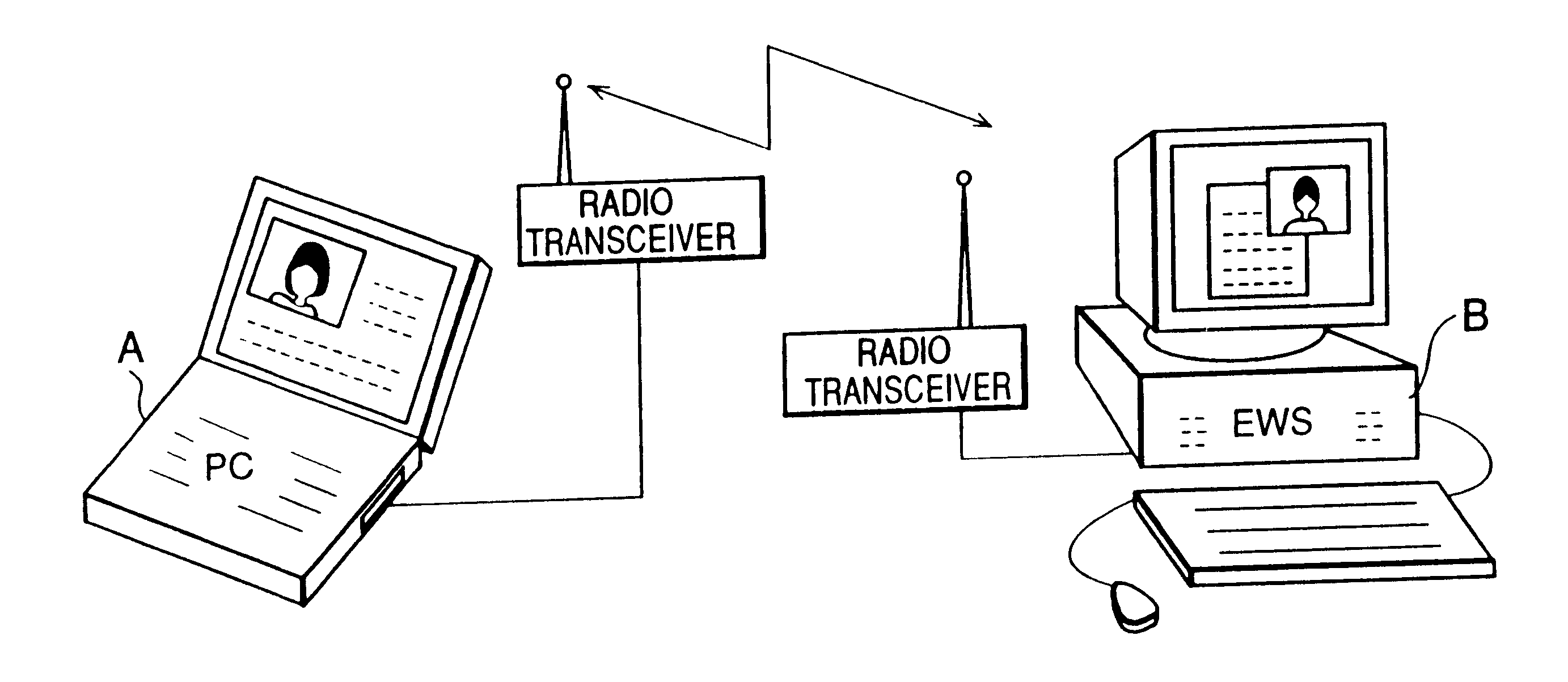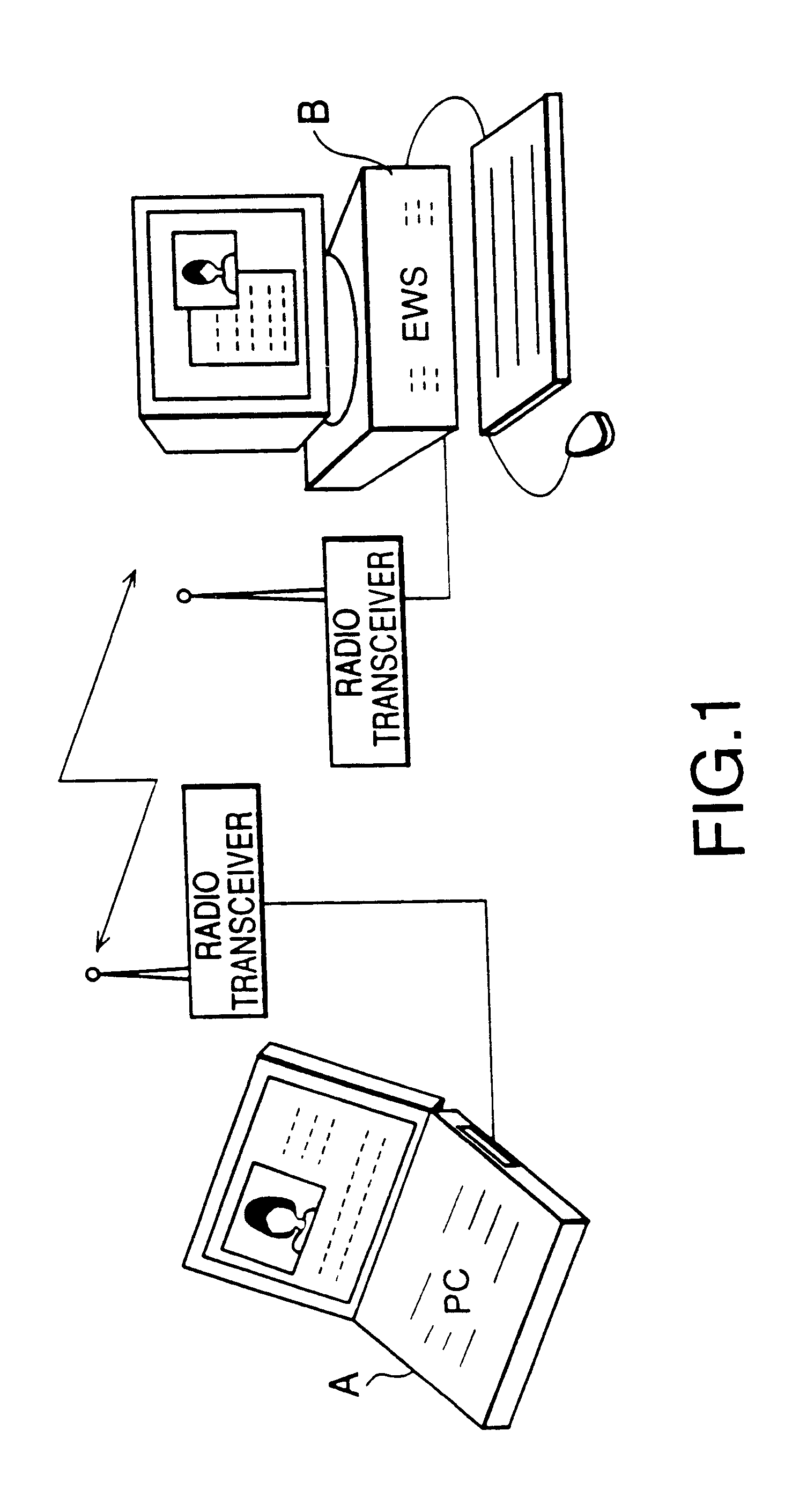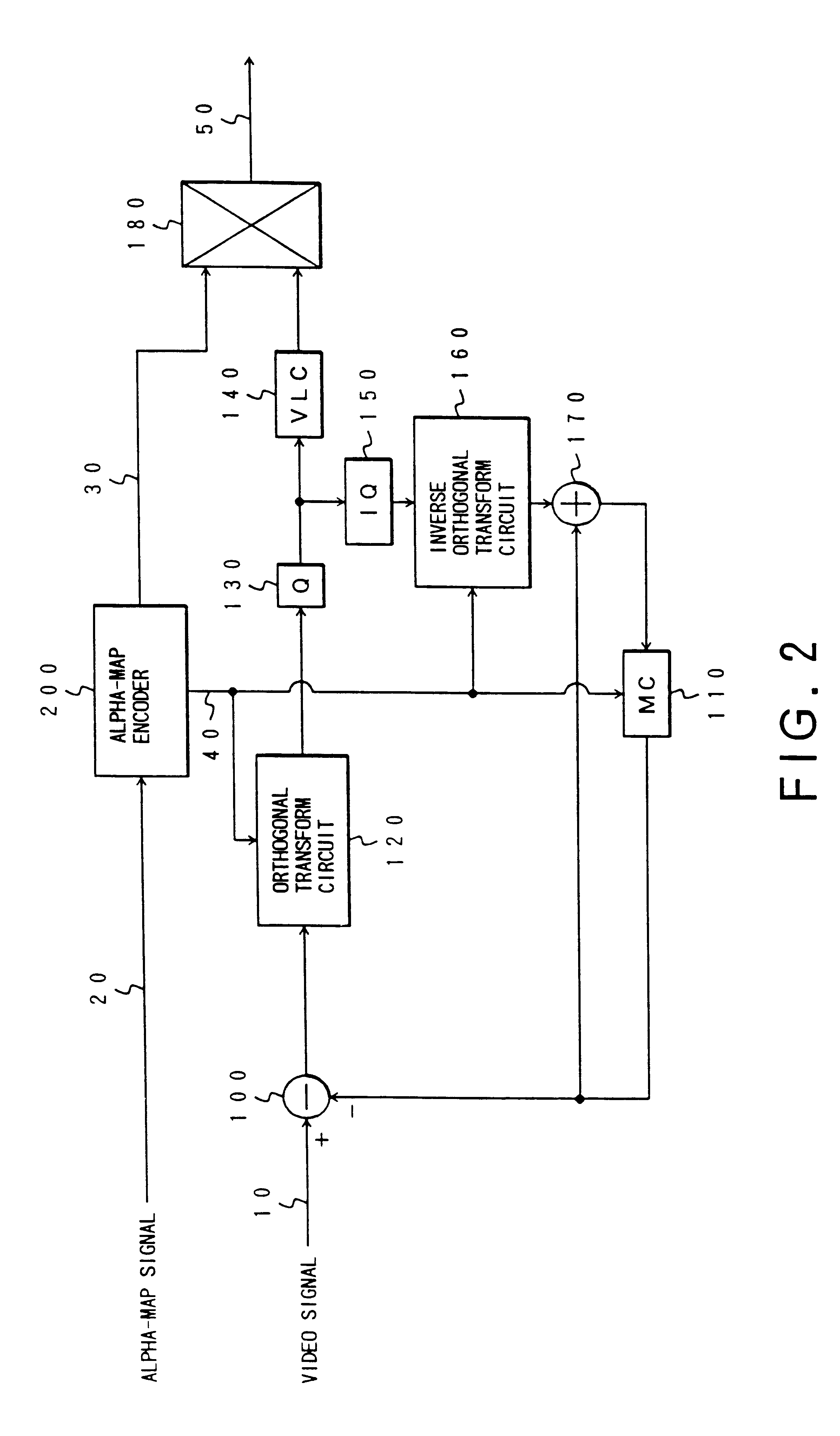Video coding and video decoding apparatus
- Summary
- Abstract
- Description
- Claims
- Application Information
AI Technical Summary
Benefits of technology
Problems solved by technology
Method used
Image
Examples
second embodiment
The two-dimensional encoding in the second embodiment will be described by taking encoding of the positions of five changed pixels on a reference line and an encoding line, as shown in FIG. 9A, as an example. If the distance between a1 and b1 is three pixels or less, the distance is encoded in the vertical mode (V). In other cases, the horizontal mode (H) is used.
In FIGS. 9A to 9D, "a0" is a starting changed pixel on the encoding line, and "a1" is a first changed pixel on the right side of "a0" on the encoding line. "a2" is a changed pixel next to "a1" on the encoding line, and "b1" is a first changed pixel on the reference line on the right side of "a0" and having a color opposite to that of "a0". "b2" is a changed pixel next to "b1" on the reference line. In this example the procedure of MMR encoding is as follows.
[1] As shown in FIG. 9B, if the changed pixel b2 on the reference line is on the left side of the first changed pixel a1 on the encoding line, the pass mode (P) which me...
third embodiment
As the present invention, a code amount reducing technique when the region occupied by the object in a whole frame is very small will be described below with reference to FIGS. 29A to 30B.
In a case where the region occupied by the object in a while frame is very small as shown in FIG. 29A, the amount of codes is sometimes reduced by encoding an alpha-map signal of the small region containing the object, as shown in FIG. 29B, rather than an alpha-map signal of the whole frame. If this is the case, the size of the small region and the positional relationship in the frame must be known. Therefore, the position address of an upper left corner S of a small region, which represents the position of the small region, and the dimensions (h, v) of the small region in the (horizontal, vertical) directions are additionally encoded as additional information. Furthermore, to reduce the amount of codes of S and (h, v), the small region is so set as to be an integral multiple of a block which is a ...
fourth embodiment
As the fourth embodiment, a technique which smooths an oblique discontinuity occurring due to sampling conversion (enlargement / reduction conversion) will be described below with reference to FIGS. 4, 33A and 33B, and 34.
When a binary picture is repeatedly reduced and enlarged, oblique lines or curved lines easily loose their smoothness. Since an alpha-map signal is binary picture information, the signal readily brings about this phenomenon when repeatedly reduced and enlarged. In addition, an alpha-map signal is used to extract or identify a portion of interest in a frame. Therefore, the loss of smoothness leads to degradation of image quality. Accordingly, a technique by which this problem of the loss of smoothness is eliminated is necessary.
This embodiment relates to a binary picture processing method which smooths an oblique discontinuity occurring due to sampling conversion (enlargement / reduction conversion) in the arrangement shown in FIG. 4.
FIGS. 33A and 33B are views for expl...
PUM
 Login to View More
Login to View More Abstract
Description
Claims
Application Information
 Login to View More
Login to View More - R&D
- Intellectual Property
- Life Sciences
- Materials
- Tech Scout
- Unparalleled Data Quality
- Higher Quality Content
- 60% Fewer Hallucinations
Browse by: Latest US Patents, China's latest patents, Technical Efficacy Thesaurus, Application Domain, Technology Topic, Popular Technical Reports.
© 2025 PatSnap. All rights reserved.Legal|Privacy policy|Modern Slavery Act Transparency Statement|Sitemap|About US| Contact US: help@patsnap.com



